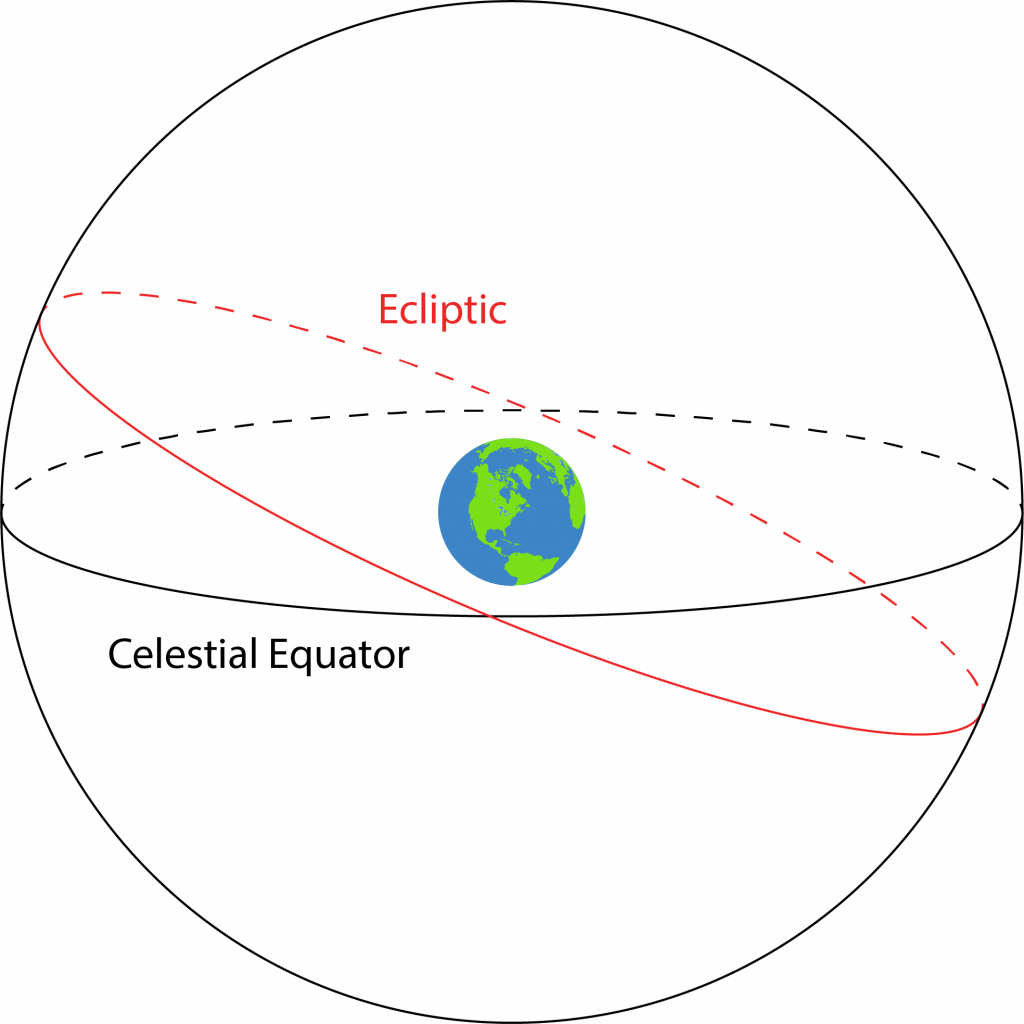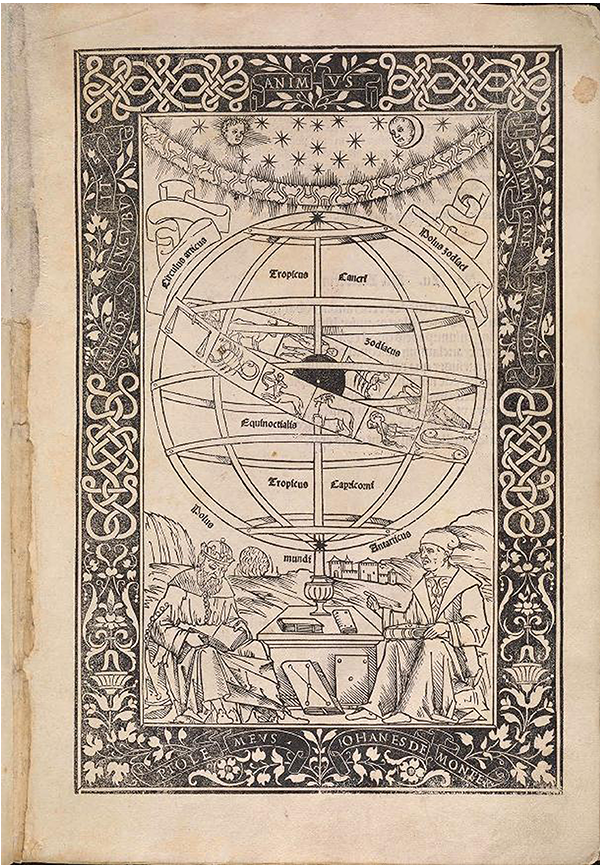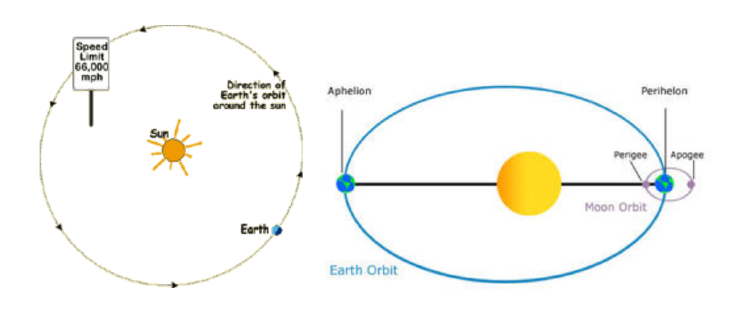Unit 5: Exploring the Nature of Astronomical Phenomena in the Context of the Sun/Earth/Moon System
VII. Using Central Ideas Based on Evidence to Develop Two Explanatory Models for Seasonal Patterns in the Constellations Visible at Night
This section uses evidence of seasonal differences in developing two explanatory models for seasonal patterns in the constellations visible at night.
Question 5.36 Why are there seasonal patterns in the constellations visible at night?
Just as there were geocentric and heliocentric models to explain day and night, people have developed two explanatory models for the seasonal patterns of the visible stars.
A. Using a geocentric model to explain the seasonal patterns of constellations visible at night
Using a fixed Earth, revolving Sun model, many ancient astronomers considered the Sun, planets, and stars to be revolving daily around a stationary Earth. They envisioned these entities as being located on nesting celestial spheres centered on the Earth and spinning daily on their axes. The Sun also appeared to move annually with respect to the stars along a path on its celestial sphere known as the ecliptic as shown in Fig. 5.66.

Because the Sun was so bright, it would outshine the stars near where it was on the ecliptic. Therefore, people on Earth would see different stars at different times of year, those opposite the Sun in its annual path on the ecliptic around the Earth. These ancient astronomers envisioned the Sun’s path along the ecliptic as tipped at an angle to the celestial sphere’s equator. In this geocentric model, the constellations appeared on an inclined band on the ecliptic of a celestial sphere encircling the Earth as shown in Fig. 5.67. The band was known as the Zodiac as shown in this illustration published in a book by Regiomontanus about Ptolemy’s Almagest in 1496. (http://abyss.uoregon.edu/~js/glossary/ptolemy.html).

B. Using a heliocentric model to explain the seasonal patterns of the constellations visible at night
As suggested by Copernicus in 1543 and Galileo in 1632, an alternative explanatory model is that the Sun is not moving but it is the Earth that is revolving around the Sun. Demonstrate this heliocentric model as follows:
Equipment: Use a lamp without a shade, masking tape, 4 pieces of chart paper, marker, and circular lid for each small group or student:
Place a lamp without a shade in the middle of a dark room. Use masking tape to tape the cord to the floor to avoid having anyone trip over it. On each of four large pieces of chart paper, draw a constellation to represent one of the seasons such as those shown in Figs. 5.50-5.54. On each wall of the room, tape a constellation representing spring, summer, fall or winter night skies. Start by placing the constellation representing summer on the wall that is in the north direction if you live in the northern hemisphere or in the south direction if you live in the southern hemisphere.
- Everyone stand in a circle around the lamp. How would you each model “midday”?
- Next all model a rotating Earth by rotating in place, counter-clockwise if you live in the northern hemisphere, clockwise if you live in the southern hemisphere.
- How would you each model “midnight”?
- What constellation do you each see represented on the wall you are facing?
What constellations do colleagues see when facing other walls? - What constellation represents what is seen during each season?
- What constellation is on the wall modeling what someone may see at midnight during spring?
- during summer?
- during autumn?
- during winter?
- If you live in the northern hemisphere, keep rotating while revolving around the lamp in a counter-clockwise direction.
If you live in the southern hemisphere, keep rotating while revolving around the lamp in a clockwise direction. - Stop in the midnight position occasionally and report what constellation you see on the wall you are facing.
- Describe how this demonstrates a heliocentric model of the Earth’s annual motion with respect to the Sun.
- Sketch the circular path you and your classmates are following around the lamp
- as if you are looking down on this activity from above the lamp
- as if you are looking at this activity from the side, as if you are looking in on it from a window
- Check the shape of your drawings by looking at a circular lid
- from above
- from the side
Resources in books and on the Internet frequently differ in the perspective assumed in drawings of the Earth’s orbit. As shown on the left in Fig. 5.68, drawings from a perspective of looking down on the solar system from above show an almost circular orbit. As shown on the right in Fig. 5.68, drawings from a perspective looking at the orbit from the side show an exaggerated elliptical shape.

https://spaceplace.nasa.gov/launch-windows/en/
https://www.nasa.gov/audience/forstudents/5-8/features/nasa-knows/what-is-orbit-58.html

